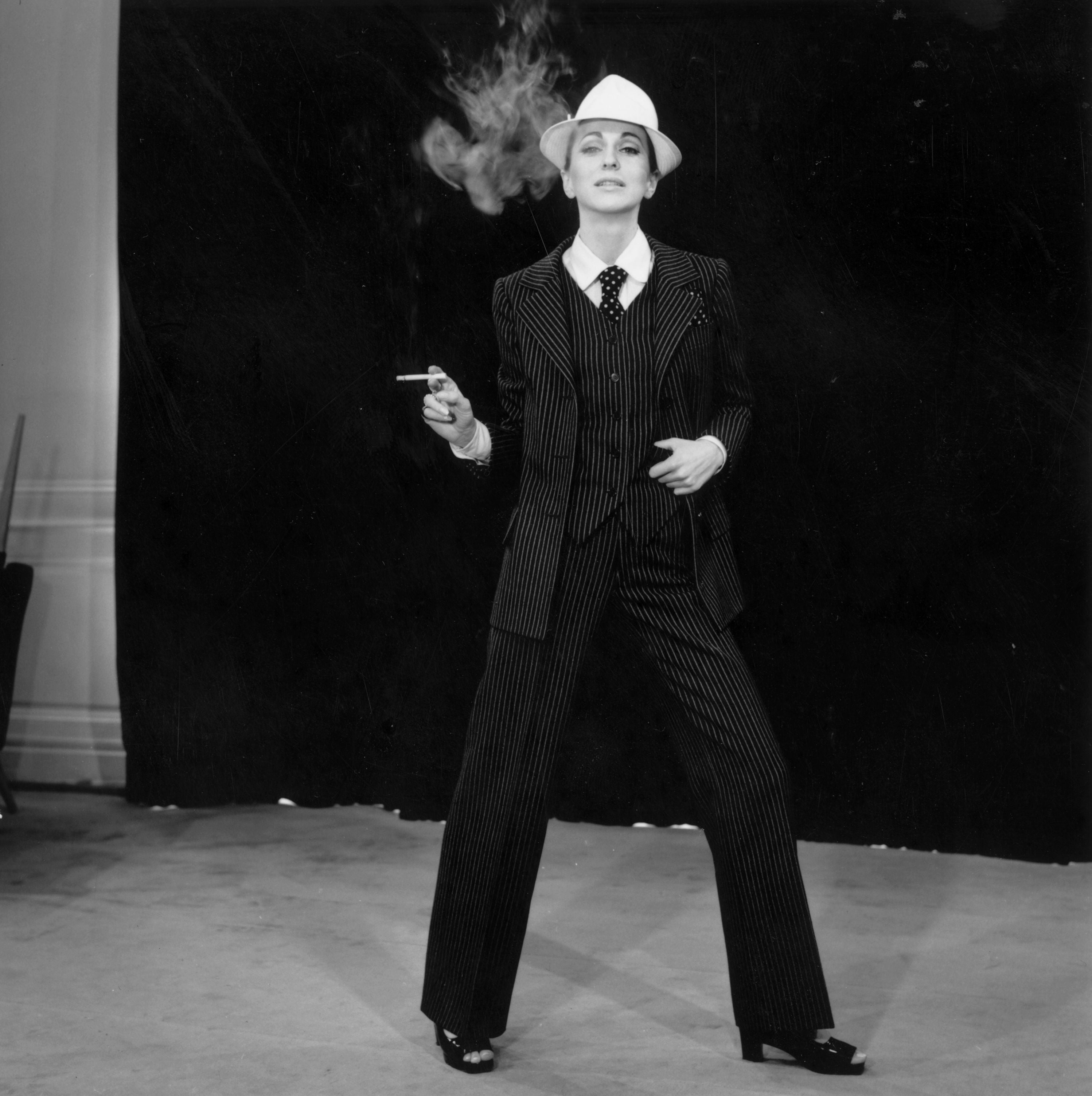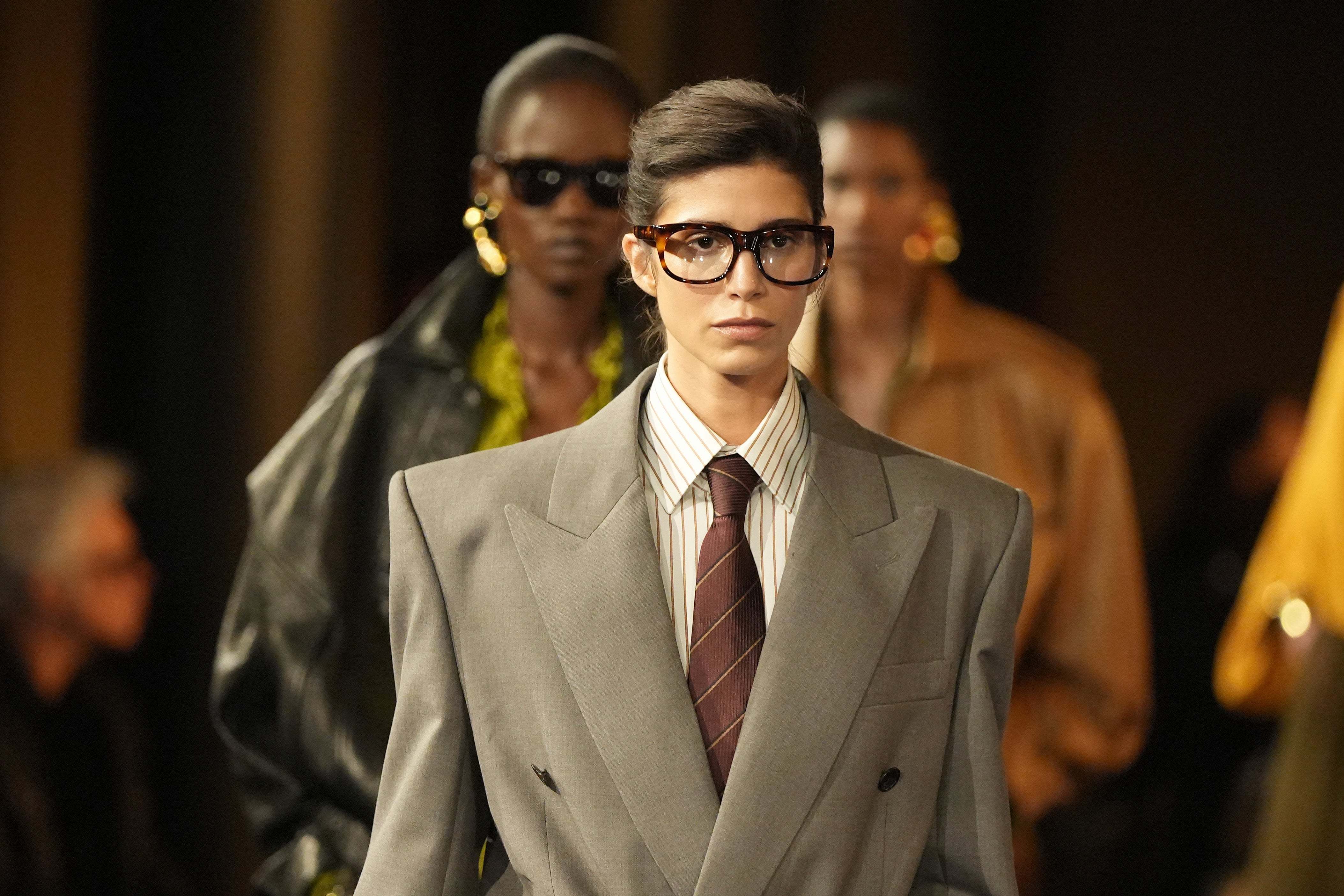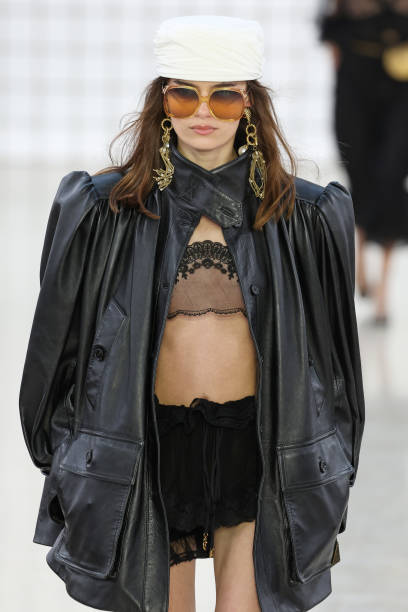Why do straight men hate my XL blazer?
The growing popularity of menswear fashion has women ditching crop tops for shoulder pads. But why are men still bothered by a woman dressed in a loose-fitted suit? Kaleigh Werner


Your support helps us to tell the story
From reproductive rights to climate change to Big Tech, The Independent is on the ground when the story is developing. Whether it's investigating the financials of Elon Musk's pro-Trump PAC or producing our latest documentary, 'The A Word', which shines a light on the American women fighting for reproductive rights, we know how important it is to parse out the facts from the messaging.
At such a critical moment in US history, we need reporters on the ground. Your donation allows us to keep sending journalists to speak to both sides of the story.
The Independent is trusted by Americans across the entire political spectrum. And unlike many other quality news outlets, we choose not to lock Americans out of our reporting and analysis with paywalls. We believe quality journalism should be available to everyone, paid for by those who can afford it.
Your support makes all the difference.“Nice blazer; fits you perfectly,” the bouncer snickered. I was standing outside a trendy dive bar in New York’s East Village – the watering hole for 20-something Manhattanites – wearing my favorite item of clothing, a grey, extra-large men’s blazer with shoulder pads. He was right, it didn’t fit me, but that was the point. I bought it from a dusty warehouse thrift store outside Washington DC in college and have barely taken it off since. Amongst a sea of tank tops and baggy jeans, I’ll admit it stood out a little, but had he not seen Yves Saint Laurent’s spring/summer 2025 runway? Does he not know who Hailey Bieber is? Thirty minutes later inside the bar, another guy takes his shot: “So, can I just ask, why the big blazer? Not that I’m saying it’s bad but it’s definitely an interesting choice.”
He was the second man to comment on my blazer in the space of an hour and, unfortunately, he wasn’t the last. “Are you cold or something?” a third chuckled next to him. Finally, I gave up. “I work in fashion,” I lied. “I’m a fashion critic.” These words, similar to my blazer, were the fast-acting male repellent I needed. The man’s smirk fell. Strangely, he wasn’t interested in hearing my commentary on his outfit, despite so kindly offering me his.
Before leaving that night, I had torn through my closet before finally landing on my go-to coat. It’s not exactly the typical dive bar attire, but I feel confident in it so why should that matter? “Just wear it,” my friend encouraged. “You look great, and you feel great. Who cares?” Apparently, men do.

Like (actual) fashion critic Cathy Horyn and her beloved brown wool Marni pants, I’ve worn my Reaction: Kenneth Cole blazer so much that loose threads threaten its structural integrity. Ever since I first found the coat, I have embellished almost every plain base with the 1980s-esque blazer, cocooning my 4ft 11in self under the refined layer of protection.
Exhausted by the rise of fast fashion and the pressure of a never-ending trend cycle, I’ve found solace in the menswear piece that’s now become the symbol of my twenties. The jacket is sophisticated on its own but becomes eccentric and unique when I put it on. What appears as a garment that’s far too big for me is the catalyst to my frivolous style – a mixture of masculine silhouettes and hyperfeminine base garments. The proportions aren’t right; however, the character I assume in it makes up for the extra room.

While I believe the jacket perfectly epitomizes my bubbly persona, it never fails to be questioned and crowed at by male strangers at bars. Why after years of womenswear evolution, not to mention a recent surge in the mix of masculine and feminine fashion codes, are men still bothered by a woman dressed in loose-fitting tailoring?
To answer this, we must go back in time. Menswear has always been synonymous with power, authority, and identity. Before the 19th century, men would wear their uniforms to work while women, who weren’t concerned with the functionality of their dress, would don constricting corsetry and billowing gowns. But when it came time for them to take over working-class jobs, they looked to men’s clothing to assert dominance.
Yves Saint Laurent introduced “Le Smoking,” a tuxedo-tailored pantsuit for women in 1966. Twenty or so years later, female ambition was further realized through “The Power Suit,” a boxy and bold statement ensemble made by designers like Giorgio Armani and Theirry Mugler and worn by mega stars Madonna, Grace Jones, and more. It was recently reimagined by Bella Hadid for Yves Saint Laurent’s 2025 ready-to-wear. By this time, women had established their power and no longer cared about outwardly rejecting conservative morals. This fashion expansion represented a newfound autonomy for them as they strayed from thin shapes and body-hugging clothing forms.

The male disapproval of my blazer, I think, comes from a place of fear – a panic that the romantic ideas of womanhood, formerly exhibited through demure dress, will soon cease to exist. I don’t believe men consider the style crossover to be a reflection of a future where male autonomy is lost, but that maybe their delicate perception of women will be. Before entering the workforce, women honed their sensuality through form-fitting dresses, even if that meant they couldn’t work. Ladies fastened themselves in tight bodices under their most special gowns to court suitors because men found that pleasing. This then laid a framework for what femininity was, and still is, understood to beby a lot of guys.
I didn’t buy my blazer to overtly defy gender norms, and I also didn’t purchase it with the male gaze in mind. Since I’ve developed my personal style, I’ve focused my attention on the garments and structures that make me feel most like myself regardless of whether men find the look attractive. And I’m not the only one to find that self-gratification in oversized menswear, as impractical as it may appear to some sneering dudes.

This spring/summer 2025 fashion season alone saw several designers revive a sense of playfulness in their womenswear collections by replacing slim tailoring with sloppy suiting and bunchy pants. Designers like Anthony Vaccarello for Saint Laurent, Matthieu Blazy for Bottega Veneta, and Chemena Kamali for Chloe championed a movement to “make fashion fun again” this year with boxy shoulder pads and whimsical renditions of workwear. Models were dressed in loose-hanging dress shirts, classic suit ties, and wide-frame glasses.
For Kamali’s spring/summer 2025, her sophomore collection for the house, the designer presented a dichotomy of soft sheer and heavy outerwear to redefine existing perceptions of feminine fashion and show how women no longer dress strictly sexy to feel womanly.

The threatening nature of my blazer is not that it reflects female authority in the workforce, but that it devalues male validation and an outdated idea of feminine beauty. Men may happily support women taking on higher-level jobs yet a lot of them still refuse to see women in oversized, ultra-masculine styles because it simply doesn’t fit the traditional mold they find attractive.
Womenswear can be tender and ethereal, and it can also be illogical and macho. The point is that it shouldn’t need to be explained, and it doesn’t have to make sense to anyone other than the wearer – fashion is self-expression, emphasis on the “self.”
Join our commenting forum
Join thought-provoking conversations, follow other Independent readers and see their replies
Comments